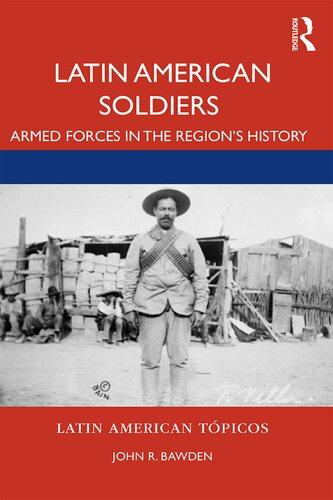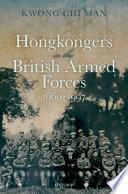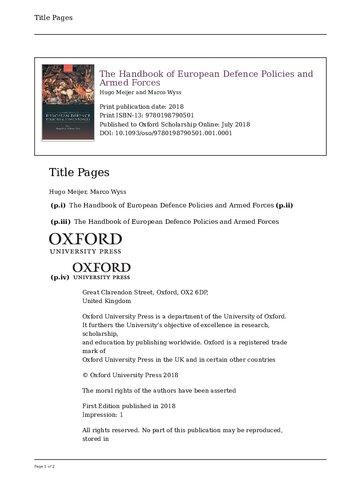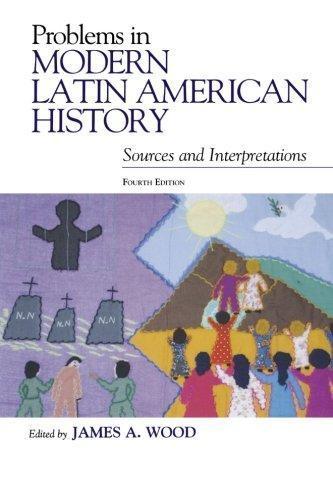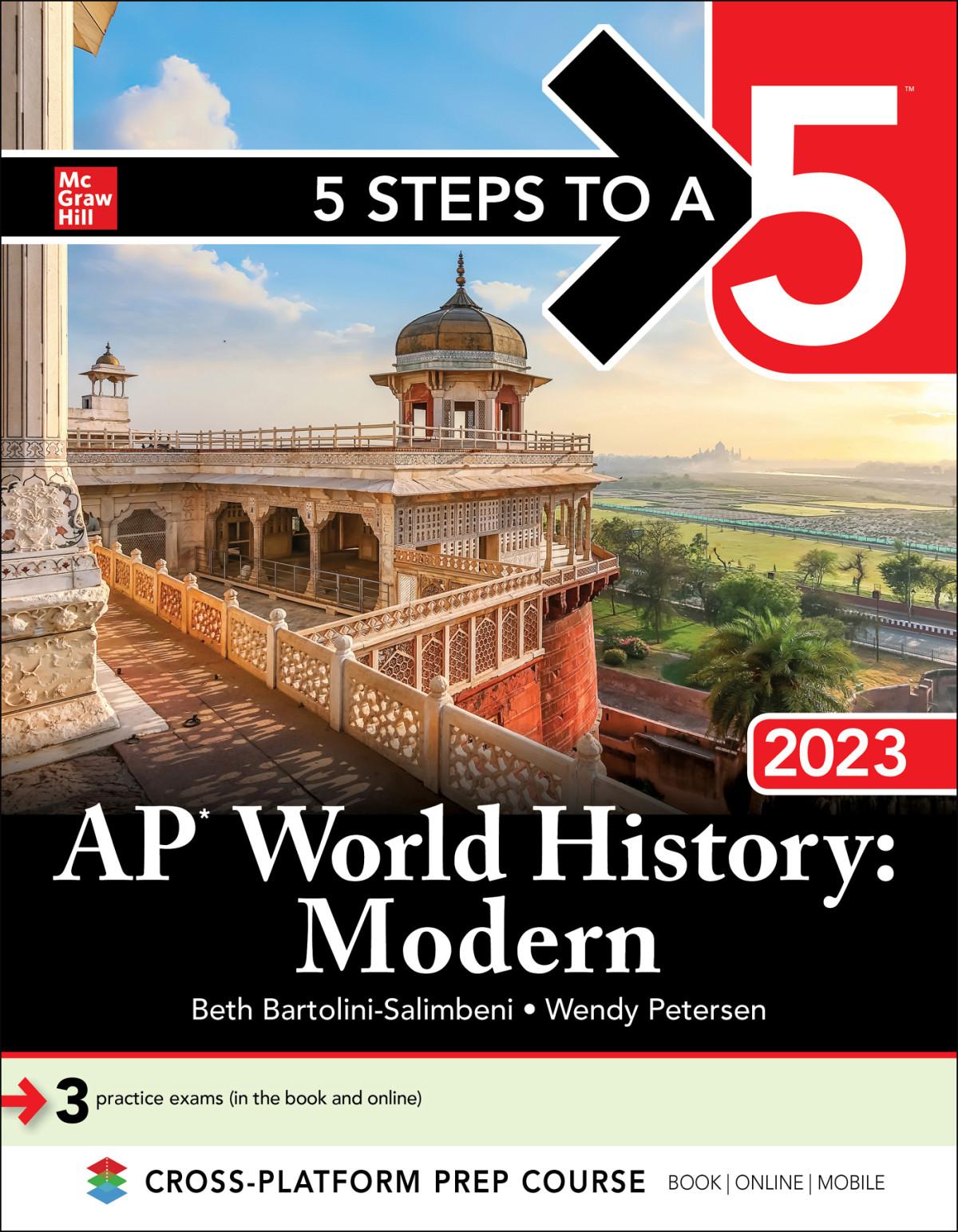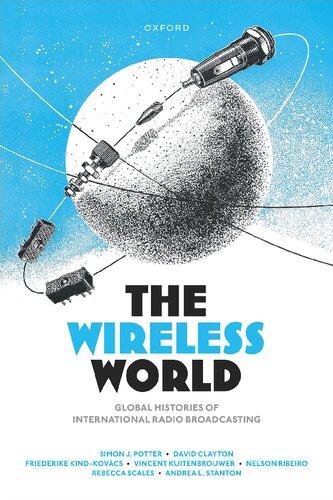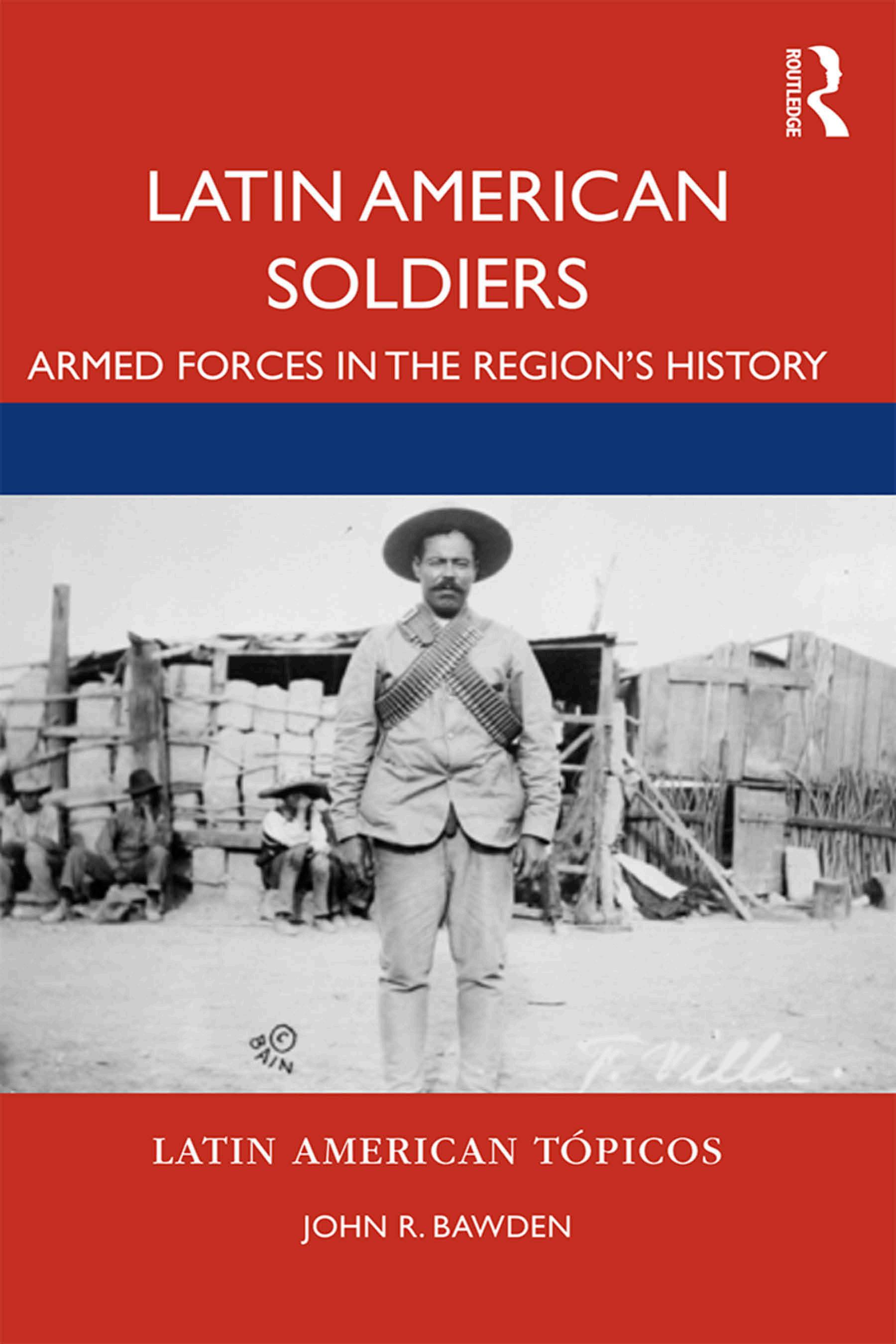1 INTRODUCTION
TwocenturiesaftertheFalloftheWesternRomanEmpire,MuslimcommanderTariqibnZiyadlandedalargeforceofBerberhorsemanontheIberianPeninsulaandkilledRoderic,kingoftheVisigoths.Tariqproceededto capturecitiesacrossHispania(Romannameforthepeninsula)including Toledo,theVisigothcapital.By720CE,allbutthenorthernmostreachesof thecountrywereoccupied.Thesedevelopmentsensuredthatthepeople livinginAl-Andalus,orthenameforlandsunderMuslimruleinIberia, wouldhaveauniquemedievalexperience.MozarabicChristiansspokeArabic andworshippedinthatlanguage.SephardicJewsdevelopedtheirowndistinctivecultureandMuslimBerberpeoplesresentedtheethnicallydominantArabs.
AtthepeakofIbero-Islamiccivilization,morethanhalfofthepeninsula’ s inhabitantswereMuslim,bothconvertsandsettlers,andCórdoba,thecapital ofAl-Andalus,wasoneofthelargestcitiesintheworld.Richandcivilized, Córdoba’smarkets,gardens,andlibrarieshadnoparallelintheLatinWest. GoldcoinsmintedinthecapitalcirculatedinotherMuslim-heldcities –Lisbon,Toledo,Seville,Granada,Valencia – andmadethemattractiveto Christianprincipalities.By1050CE theborderbetweenChristianandMuslim civilizationstretchedfromCoimbrainnorthernPortugaltoBarcelonainthe eastalongabeltofno-man’s-lands.Here,ChristianandIslamicarmiesskirmished,andpatternsofconquestdevelopedthatwouldhaveimportantconsequencesfortheAmericas.
Menwhoprovidedmountedmilitaryserviceenteredtheranksofthelower nobility(hidalgos)andmunicipalmilitiasdevelopedstructuresfortheircollectivedefenseandoffensiveoperation.TheexpansionofCastile,aChristian kingdominnorthernSpain,dependedontheabsorptionofterritoryinAlAndalusandCastiliankingsoffered fueros,orlegalprivileges,totownsand
peoplewillingtosettle,defend,andChristianizefrontierlands.Insecure, underpopulatedterritoriesrepresentedopportunityforsoldiersoffortuneand successfulraidsmightresultinthedivisionofcapturedloot:gold,silver,weapons,andanimals.1
RodrigoDíaz(1043–1099),knownforposterityasElCid,wasasoldierfor hireandaverysuccessfulone.BornnearBurgos,thehistoriccapitalofCastile, Díazlenthislegendary fightingprowesstosovereignsacrossthepeninsula.In fact,hewonseveralbattlesforMuslimemirsinZaragoza,andderivedhistitle, ElCid,fromtheArabic sayyid,meaninglordorcommander.Lionizedinepic poetry,ElCidbecameaSpanishiconalthoughhissubsequentmythologization asacrusadingwarriorwhoreclaimedlandsforChristendomobscuresthefact thathefoughtforbothChristianandMuslimstatesinanerabeforenational allegiances.2
1212wasamajorturningpointinthecenturies-longChristianReconquest (722–1492).ThatyearacoalitionofChristianarmiesstoppedaMoroccan Berberforcefrompushingnorthward.Notlongafter,CastilianscapturedCórdoba(1236)andSeville(1248).ThePortugueseconqueredtheAlgarveregion (1249),whichcompletedthatkingdom’sReconquestandfreedupresources formaritimeactivities – shipbuilding,cartography,improvingnauticalinstruments – thatwouldmakepossiblePortugal’svoyagesofdiscoveryandglobal empire.Itwasalsothethirteenthcenturywhenshoutsof “Santiago!” (St.James,patronsaintofSpain)becamethebattlecryofChristianarmies fightingMuslims.
AsChristianspushedsouthtowardsAndalusia(southernSpain),Castilian monarchsgrantedthetitle adelantado (onewhogoesforward)tonobleswilling toassumethecostsofconqueringandpacifyingfrontierzones.Inreturn, adelantados receivedauthorityonbehalfofthekingtoadministerjustice,enrich themselves,anddispensefavors.Onesuchfavor,thegrantofan encomienda, includedtherighttocollecttributefromaspecifiednumberofconquered people.Inthismanner,CastileacquiredparcelsoflandfromMuslimrulers without financingthecampaignsdirectly.Thesamepatternunfoldedinthe Americas.CharlesVdidnotsendaroyalarmytoconquertheIncaEmpire, whichstretchedfrommoderndayEcuadortocentralChile,hemerelylicensed FranciscoPizarrotoassumetherisksandrewardsofsuchanundertaking.The SpaniardswhofollowedPizarrointoPerusought encomiendas andacutofall capturedtreasure. Encomenderos,fortheirpart,hadtorendermilitaryserviceto theCrownintheeventofemergenciesandpayforRomanCatholicclergyto visitthevillagesoftheirtribute-payingIndians.
TheconversionofinfidelswasanotheraspectoftheReconquest.Muslims andJewswhoconverted,morethanamillionofthem,wereknownas “New Christians” andtheprimarypurposeoftheSpanishInquisition,establishedin 1478,wastoensuretheorthodoxyoftheseconverts. “OldChristians” claimed limpiezadesangre (cleanlinessofblood)orlineagesuntaintedbyJewishor
Muslimancestry.Theconcepthadimplicationsforsocialstratificationbecause convertswereexcludedfromthenobility,publicoffices,andbanned,atleast intheory,fromeveremigratingtotheAmericas.Europeansmadeclaimsto socialsuperioritybasedontheirstatusasOldChristians.
DistinctivemilitaryorganizationdevelopedduringtheReconquest.Spanish horseman,called jinetes,developedaridingstylesuitedforclosecombatonLa Mancha,aplainincentralSpain.Bythe fifteenthcentury,Spanishinfantry carriedswords,muskets,crossbows,andpikes.DuringtheWarofGranada (1482–1492),infantryeffectivelyprotectedthemselvesfromchargingMoorish cavalrywith tercios,ormassedformationsthatcombinedpikesand firearms. Thesedisciplined,mutuallysupportiveformationsturnedSpainintoEurope’ s leadingmilitarypowerandprovidedheavilyoutnumberedSpaniardswith ameanstosurviveencounterswithindigenousarmiesintheAmericas.
Thus,whenSpanishconquistadorscametotheAmericas,theytransferred theReconquest’speculiarmixofmilitaryorganization,religiouszeal,and profitmotive.Spaniardsshouting “Santiago!” representedanuncompromising versionofRomanCatholicism,backedbyestablishedpatternsofconquest. ThemenwhofollowedHernandoCortés(conquerorofMexico)andFranciscoPizarro(conquerorofPeru)wereordinarymen – merchants,tailors,artisans,notaries.FewhadmilitaryexperienceinEurope,buttheycamefrom amilitarizedsocietywithacrusading,militantfaith.Furthermore,manyof Spain’sconquistadoreshailedfromExtremadura,thepoorestregioninCastile. ItisnotacoincidencethatCortés,Pizarro,andPedrodeValdivia(conqueror ofChile)wereallExtremadurans,steepedinthecultureofReconquestand eagerforopportunitiestheirhomeregioncouldnotoffer.Conquestinthe nameofChristianityrepresentedapathforupwardlymobilementoachieve wealthandstatus.
IndigenouswarriorsinMesoamericaandthecentralAndespossessedbows andarrows,lances,shields,swords,slings,spears,andclubs.Thefactthat Europeanspossessedcavalryandpiercingweapons – steelswords,muskets, crossbows – couldmakeforahighlyasymmetricalencounter,butnative peoplewerenotpushovers.Inmanyplacestheyreliedonstoutresistanceand superiornumberstodefeattheforeigninvaders.
TheTaínopeoplesthatChristopherColumbusmetinCuba,Hispaniola, andPuertoRicowerepeacefulagriculturalists.Theydidnotfallunderthejurisdictionofanorganizedstateabletomobilizethousandsofmenforconcerted actions.Norweretheyaccustomedtoheavytaxation,whichmadeitdifficult fortheSpanishtogroupCaribbeanpeoplesinto encomiendas forexploitation andChristianization;most fledordiedfromdisease.NativesinMesoamerica andthecentralAndesweredifferent.There,Castiliansfoundimperialstates withlargearmiesanddensegroupingsofsedentaryfarmers.
TheAztecEmpire,atributarystateincentralMexico,hadamartialculturepredicatedonconstantwarfare.ThebestevidenceofAztecmilitary
powerwasthefactthatnativewarriorsexpelledtheSpanishfromtheir imperialcity,Tenochtitlán,onJune30,1520,andin fl ictedstaggeringlosses ontheirretreatingadversaries(around500Spanishand2,000indigenous alliesoftheSpanishdied). 3 Smallpox,however,weakenedTenochtitlán’ s inhabitantsasSpaniardsregroupedandreturnedwithevenmoreindigenous allies,notablyarivalethnicgroupcalledtheTlaxcalans.TheSpanish besiegedtheAzteccapitalonMay26,1521,butitstopplinginAugustdid notprecludeprolonged fightswithotherethnicgroupstothewest,north, andeast.4
TheMayas,anotherlargeethnicgroupscatteredacrossthedenselypopulatedYucatánPeninsula,provedformidableinbattle,oftendeceivingSpaniards withfeignedfriendlinessbeforedrivingthembacktothecoastamidhailsof stonesandarrows.OutnumberedEuropeanshadtotreadcarefully.Itwasnot untilthousandsofethnicallydistinctMesoamericansjoinedtheSpanishas acombinedforce,thatEuropeanscouldsubduetheregion.Aswasthecase everywhereintheAmericas,European-origindiseasesplayedacentralrolein theconquest.5
IllnessandcivilwarwerealreadyconvulsingthecentralAndeswhenFranciscoPizarrocapturedIncaemperorAtahualpaattheBattleofCajamarca (1532).Pizarro’sunderhandedexecutionofthenativesovereignilluminated Europeanintentions.OneIncageneral,Rumiñawi,adoptedascorched-earth policy.HeburnedQuito,thenortherncapital,beforeitstreasureandresources couldfallintoenemyhands.ForcesloyaltoMancoIncakilledhundredsof SpanishsoldierstryingtorecaptureCuzco,theimperialcapital,butthetide decisivelyturnedin1539.6 Thereafter,itbecameincreasinglycleartoAndean populationsthatSpaniardshadbothsuperiorarmsandsufficientindigenous supporttomaintainadominantposition.ThelastIncaholdout,Vilcabama, wasdestroyedin1572.
SomeIndiansescapedconquestaltogether.InsouthernChile,dispersed, semisedentarynativescalledMapucheswerequicktoadoptthehorseand devisecleverstratagemsfordealingwiththeforeigninvaders.Mapucheshad nokingorcentralizedgovernment,butduringemergenciestheyformed alooseconfederationoftribeswithanelectedcommander,or toqui.No matterhowmany toquis theSpanishcaptured,resistancecontinuedfromthis fiercelyindependentnativeculture.Giventhepoweroftheconfederation,the SpanishCrownhadnochoicebuttorecognizeitssovereignty.Something similaroccurredinthenorthernreachesofNewSpain(northernMexicoand thesouthwestUnitedStates)wherenomadicApachetribesadaptedthehorse totheirpreexistingwarriortradition.InthisfringeoftheSpanishEmpire,it wasApacheswhoraidedSpanishsettlementsandmadelifeinsecureforHispaniccolonists,nottheotherwayaround.Notwithstandingcasessuchas these,theSpanishachievedapreponderanceofcontrolduringthe firstcentury ofcolonizationanditwasdone without aroyalarmy. Encomenderos putdown
IndianuprisingsandSpanishmenhadtomusterindefenseoftheempire duringcoastalattacksfrompirates.
ColonialLatinAmericansocietywasdividedinto peninsulares (peopleborn ontheIberianPeninsula),creoles(whitesbornintheAmericas),Indians(taxpayingsubjectsoftheking,legallydefinedasminors),Africans(usuallybought asslaves),andawidearrayof castas (peoplewithmixedparentage).Europeans stoodatthetopofthesocialpyramidwithIndiansandAfricansatthebottom. Conceptssuchas limpiezadesangre reinforcedthestatusofwhitesandtop administrativepositionswerereservedforcreolesand peninsulares.
Here,itisworthobservingthattheSpanishEmpirewasaland-basedentity designedtoextracttributeandpreciousmetalsfromtheinterior.ThePortugueseEmpirewasmuchmoreseaborne.Brazilianplanterslivednearthecoast andproducedsugar.TheyalsoimportedfourmillionAfricanslaves(themost ofanycountryintheAmericas),whichensuredthatblackandbrownmen wouldcarryarmsincolonialmilitiasandnationalarmies.In1822,65percent ofBrazil’spopulationwaseitherAfricanorofAfricandescent.
EnvironmentdeterminedmanyaspectsofthesocialstructureinNorthand SouthAmerica.NewEnglandlackedaneconomicrationaleforcoercedlabor. Familyfarmsdevelopedinthecoldnorthernlatitudes,whileplantationeconomiesbasedonslaveryemergedinlocationswithsoilssuitableforcashcrops likesugarandcotton.ExploitableindigenouspopulationsinMexicoandPeru meantthatEuropeanscouldprofitfromcolonialisminawaythattheysimply couldnotinChileorCalifornia,bothpoorimperialbackwaters.Last,the richesofSpanishAmericanecessitatedgarrisonsofsoldiersandstrongimperial defensesingeopoliticallyvitalregions.
Spanishcolonialadministrationreliedheavilyonmilitaryofficers.Many servedasviceroys(officialswhoruledadministrativeunitsfortheCrown)and theCrownappointedofficerscalledcaptaingeneralstogovernvulnerable islandsandremoteterritoriessuchasCubaandChile.Captaingeneralshad jurisdictionoveranypersonsubjecttoamilitary fuero aswellasbroadpowers fordefensewithintheirjurisdiction.Thetitleandassociatedresponsibilities camefromtheReconquest.Inamassiveempirevulnerabletopiracyandbandits,militaryofficerswerehigh-status figures.
Codesoflegalexemption(fueros)setreligiousandmilitaryofficialsapart fromtherestofcolonialsociety.Neitherofthetwogroupswassubjectto ordinaryciviliancourts.Theyrepresentedseparatecastesofprivilegedindividuals.Atthesametime,thenumberofpermanentsoldiersinChile,Cuba,and Venezuelararelyexceeded1,500.Thisisonereasonthekingbeganorganizing militiasforimperialdefenseratherthanfull-timesoldiers(regulars).Militiamen wereAmerican-bornandrecruitedforoccasionalservice,especiallyduring emergencies.
Whatevermixedfeelings peninsulares hadaboutarmingcolonials,theBritishcaptureandoccupationofHavanaduringtheSevenYears’ War
(1756–1763)compelledtheSpanishCrowntostrengthenitssystemofmilitias. Ontheeveofindependence,militaryforcesinNewSpain(MexicoandCentralAmerica)consistedofapproximately6,000regulartroopsand34,000militiamen,variouslyassignedtodefendthecoastsandinteriorprovinces.7 These militiasensuredthatcreoleswouldgreatlyoutnumber peninsulares inthemilitary.Theyalsogavecreolescommandexperience.For mestizos (halfIndian, halfwhite),browns(halfblack,halfwhite),andfreeblacksmilitaryservice offeredprestige,apossiblecommission,andothercorporateprivileges.ColonialLatinAmericansgainedconfidencetoo,afactbestexemplifiedbyamajor eventinSouthAmerica.
Inthesummerof1806and1807,Argentinemilitiassquarelydefeatedtwo separateBritishattemptstocaptureBuenosAires.Duringthe firstBritishinvasion,SpanishviceroyRafaeldeSobremonteabandonedthecity,ostensiblyto regroup,butinhisabsence,Argentinemilitiamenexpelled1,500Britishregularsandforcedthesurrenderofasecond,muchlargerBritishforce.Theoutcomedecisivelyalteredlocalperceptions.Creole-ledmilitiashadinflicted heavycasualtiesonamajorEuropeanpower,itselfasourceofpride,andthey didnotneedSpanishhelp.TheReconquestofBuenosAiresthereforeengenderednativeconfidenceandincubatedsentimentforindependence.
Spain’stwobiggestenemiesduringthesixteenthcentury,Englandandthe DutchRepublic,promotedtheideathatconquistadorswereespeciallycruel andgreedycolonizerswhorepresentedasinisterimperialenterprise(asifEnglishandDutchcolonizersweresaints).The “BlackLegend” describedSpainas adeficientculturelackingthevirtuesDutchandEnglishsettlerssupposedly broughttotheNewWorld,suchasasenseofimpartialjusticeorcapacityfor self-government.TheoldProtestantidea,althougharelicofsixteenth-century propaganda,haslingeredinWesternconsciousness.
AnotherEuropeanperspective,developedduringthenineteenthcentury’ s ageofscientificracism,heldthatgeographyexplainedLatinAmerica’ sseeminglyunstablepolitics.Longwintersinthenorthernhemisphere,thetheory went,fosteredthriftanddisciplinewhileheatandhumiditypredisposedthe peopleintropicalzonestowardspassivity,sloth,andintemperatebehavior.It followedthenthatsuchpeoplewouldrejectdemocracyandprefertheexpediencyofdictatorship.Weather,accordingtothislineoflogic,condemnedmost ofLatinAmericatorulebymilitarystrongmenwhowouldholdbackprogressivereform.TheBlackLegend,combinedwithnotionsoftropicaldeterminism,hasshapednegativestereotypesaboutLatinAmericaanditssoldiers.
NapoleonBonaparte’sinvasionoftheIberianPeninsulaandsubsequent overthrowoftheSpanishkingFerdinandVIIin1808threwtheempireinto crisis.Withoutalegitimatemonarchonthethrone,whowasinchargeoverseas?Itdidnotproduceanimmediatebreakwiththemothercountry.Infact, thecreoleswhoformedrulingassemblies(juntas)explicitlysaidthatthey wouldgovernonbehalfofthekinguntilhisrightfulrestorationtopower.At
thesametime,manycreoleswantedtoaltercolonialarrangementstotheir advantage;othersseizedthechancetorebel.WhenFerdinandVIIregainedhis thronein1814,themonarchfoolishlysoughttoharshlyreimposeabsolutism, whichmorethananythingsetoff full-blownindependencemovementsand guaranteedtenmoreyearsof fighting.8 ThisisverydifferentfromwhathappenedintheUnitedStates.
FortuneshinedontheEnglish-speakingpeopleswhorevoltedagainstthe mothercountryin1775.UpstartrebelsinBoston,NewYork,Philadelphia, andRichmondreceivedcrucialassistancefromSpainandFrance(England’ s enemies)andGreatBritainwasforcedtosueforpeacein1783.Therebels hadgoodleadershipandmoreconsensusaboutthetypeofgovernmentthey wantedtocreateafterthe fightingwasover.
LatinAmerica’swarsofindependence(1810–1825),bycontrast,lasted longerandwerefarmoredestructive.RevolutionarygovernmentsinSpanish Americahadto financemilitarycampaignswithoutaidfromSpain’senemies (infact,theyhadtoworryaboutEuropeanstatestryingtorecolonizethecontinent).Furthermore,patriotarmieshadtosurmountAndeanpeaksandmove longdistancesbylandandsea.LatinAmerica’smilitaryhistoryhighlightsthe logisticalchallengesofwar-makingintropicalandmountainousterrainaswell astheimportanceofnavalpowerinaregionofformidabledistancesand extensivecoastlines.
Themilitaryserviceofnon-elitemenspeakstothemultiethnicsocieties thatexistedintheearlynineteenth-centuryLatinAmerica.Indians,blacks,and castas werepressedintoroyalandpatriotarmiesalike.InPeru,Spanishofficers andnoncommissionedofficers(NCOs)hadtolearnelementsofQuechuaor Aymara(thecountry’stwopredominantindigenouslanguages)becauseIndian soldiersrarelyspokeanythingbuttheirnativetongue.Mixed-racecowboyson theVenezuelanplainsinitiallysidedwiththeCrown.Theyregardedcreole revolutionariesasarrogantandunsympathetic.
Patriotandroyalarmiesbothofferedfreedomtoslaveswillingto fight. Enlistmentforslaverecruitsmeantwages,meals,andemancipationiftheysurvived.Creolescouldbeambivalentaboutnonwhitesoldiers,butasthewarsof independencedraggedon,theirnumbersbecameevermoreimportant.9 PatriotslikeSimónBolívarhadtoconvincehisnonwhitecountrymenthatthey wouldbemuchbetteroff ascitizensofsovereignrepublics.AcrossLatin America,peopleencounteredaninclusiverhetoricofcitizenshipandequality beforethelaw,whichcouldbealarmingorexhilaratingdependingonone’ s socialposition.
SouthAmerica ’sliberatingcommanders – SimónBolívar,JosédeSan Martin,AntonioJosédeSucre – struckdecisiveblowstoSpanishpower from1818to1824,butunifi ed,stablegovernmentsprovedelusive.Yearsof fightingmarkedanentiregeneration.Indiansandcreoleshadkilledeach otherinPeruandMexico,leavingbehindaconservativemind-setamong
manywhites.Territorialdisputesbetweennewlyindependentcountries werejustbeginning.TheUnitedProvincesoftheRiodelaPlata(mostof whatistodayArgentina)regardedParaguayasarenegadeprovince.In 1825,BrazilandArgentinawenttowaroverthedisputedBandaOriental, nowUruguay.
Theregion’ s firstseriesofconstitutions,whichgavepresidentscontrolover themilitary,didnotcreatecarefulchecksonmilitarypower. Fueros hadlong reinforcedthesocialdifferenceofofficersinsociety,nottheirsubordinationto civilianleadersorequalitybeforethelaw.Amarkedcivil–militarydividewas presentfromthebeginning.OfficersinPeruandMexicowantedtoprotect theirstatus,notgiveitup.Theymade pronunciamientos (publicpronouncementsofpoliticalaims)aswellasstealthy,illegalseizuresofgovernment(coup d’états).
BythetimeSpanishforceswithdrewfromPeru,15yearsof fightinghadtaken amassivetoll.AtleastonequarterofVenezuela’spopulationhadbeenkilledfrom thewarsthatragedbetween1810and1830.FledglingstatesinMexicoCity, Bogotá,andBuenosAiresfacedbankruptcyaswellasseveredamagetotheir economies.IndustriessuchassilvermininghadbeenwreckedinPeruand Mexico.Aboveall,politicaleliteslackedconsensusaboutthepost-colonialorder. Conservativespreferredstrongconstitutionalmonarchiesinwhichthe RomanCatholicChurchwouldplaythesamerolethatithadduringcolonial times.Theywishedtopreservereligiousandmilitary fueros.LatinAmerica’ s liberalsadmiredFranceandtheUnitedStates.Theysoughtaseparationof churchandstate,freetrade,andlegalequalityforLatinAmerica’svarious racialandethnicgroups.WhiletheUnitedStates’ foundingfathersmanagedto writeaconstitutionacceptabletoall13states,suchafeatwasimpossiblein SpanishAmerica.Themilitarizationofsocietyfrom1810–1825leftbehindtoo manyarmedfactions.Greatplainsandwindingmountainsseparatedregional settlementsfromcapitalcities.Banditsandregionalcommandershadlittle reasontofearthecentralstate.
Strongmencalled caudillos filledthepoliticalvacuum.Theygainedpower bymobilizingprivate,irregulararmiesofruggedhorsemencapableofchallengingnationalgovernments. Caudillos didnotrulebytheswordalone.They wontheloyaltyoflocalpopulationsduetotheircharismaandbravado.They were “heroesonhorseback,” asonescholarputit,whodefiedcentralstates, dispensedfavors,andofferedprotection.10
Charismaticchieftainsleadingirregulararmiesthroughforests,plains,and jungleshasbeenonethemeinLatinAmericanhistoryanditusuallyinvolved ameasureofsocialleveling.Thatis,ordinarypeoplecouldjoinsuchforces andbenefit.DomingoF.Sarmiento,afamousArgentinewriter,arguedthat warlordsrepresentedaformofindigenousbarbarismthatcentralgovernments wouldhavetouprootanddestroyforcivilization(meaningEuropeanculture)
toprevailinLatinAmerica.11 ThecontradictionsofSarmiento’spositioncut totheheartoftheracialandethnicdividestillpresentintheregion.
Amongthe caudillos whodominatedtheirhomelandsinthenineteenthcentury,itisnotdifficulttospotelementsoftheHispanicmilitarytradition. Argentina’sJuanManueldeRosas(ruledfrom1829–1852)defendedthe RomanCatholicChurch’sprerogatives,showeduttercontemptforhis enemies,andusedgovernmentasasourceofpersonalenrichment.Rosaswas notaprofessionalsoldier,butsocietyacknowledgedandrespectedhisauthority.Thenotionthatofficers,evenwarlords,wereindispensablemenwith aroletoplayinpoliticswasonecarryoverfromthecolonialperiod.
Amidthepostindependenceturmoil,armiesandmilitaryservicecontinued toofferavenuesofsocialmobility.Republicanmilitiasconferredprivilegesand statusonnon-elitemen.Veteransusedtheirservicerecordstoargueforclemencyinrepublicancourts.12 JuanManueldeRosasgrantedlandstoveterans whohadpacifiedtheindigenous-heldterritoriesofsouthernArgentinaduring hisDesertCampaign(1833–1834).
RafaelCarrera,Guatemala’spresidentfrom1844to1865,camefrom afamilyofilliterate mestizos.Thankstohisnaturalcharismaandmilitarybrilliance,hewoundupdominatingthepoliticallifeofhisnewlyindependent homeland.SuchathingwouldhavebeenunthinkableduringSpanish colonialism.13 Carrera’spresidencyillustratesseveralthemes.First,thearmy wasaninstitutionthatofferedopportunitiestocapablenon-elitemen.Second, Carrerahadtostraddlethepostindependencebattlebetweenliberalsandconservatives.Third,Guatemalafacedexternalthreatsfrommorepowerfulcountries – Britain,Belgium,andtheUnitedStates.Four,buildingstrong institutionsinacountrydividedbetweenanindigenousmajorityandHispanic rulingeliterepresentedanenormouschallenge.Duringhisownlifetime,CarreranegotiatedGuatemala’spoliticallandscapecapably,butstableformsofcivil governancedidnotdevelop.Thearmyremainedaninstrumentofpersonal,as opposedtoimpersonal,statepower.Itwasslowtomodernizeandsubjectto outsideinfluence.
BrazilandChilewerethe firstnationsinLatinAmericatoacquirestable, centralizedgovernments.Thatachievementinthe1840smadeitpossiblefor bothcountriestoconductfarawaymilitaryoperationsonlandandsea. Mexico,bycontrast,lostathirdofitsterritory.Itsgovernmentcouldnotput downtheTexasRevolution(1836)orstoptheUnitedStatesfromlanding troopsatVeracruzandoccupyingMexicoCity(1847–1848).Theabilityof USforcestomarchinlandandobtainafavorabletreatyhadmoretodowith Mexico’sinternaldivisionsthantheweaponseithersidewielded.Mexicopaid ahighpriceforitspostindependenceturmoil.
TheFrenchintervention(1861–1867)sawMexicoresistforeignoccupation withgreatervigorthanithadinthe1840s.PorfirioDíaz,aliberalmilitary officerwhohelpeddefeattheFrencharmyatPueblaonMay5,1862(Cinco
MEXICO THE UNITED STATES
UNITED PROVINCES OF CENTRAL AMERICA
Cuba (Spain)
Belize (Britain)
Jamaica (Britain)
Puerto Rico (Spain)
CONFEDERATION
FIGURE1.1A BoundariesofLatinAmericain1830.Mexicooccupiedvasttracksof landsinwhatistodaytheUnitedStates.CubaandPuertoRicobelongedtothe SpanishEmpire.Venezuela,Colombia,andEcuadorformedasinglecountrycalled GranColombia(1819–1831).TheHaitiangovernmentcontrolledtheentireisland ofHispaniola.Boliviaoccupiedcoastalterritory,andneitherArgentinanorChile exercisedjurisdictionoverPatagonia.
GRAN COLOMBIA
HAITI
PERU
Guyanas
BOLIVIA
CHILE
ARGENTINE
Strait of Magellan
URUGUAY
PARAGUAY
EMPIRE OF BRAZIL
Ciudad Juárez
Chihuahua
Monterrey
MEXICO
Guadalajara
Matamoros
Mexico City
Puebla
Acapulco
Veracruz
GUATEMALA
EL SALVADOR
Mérida
Santa Clara
CUBA
Santiago(Cuba)
BELIZE
HONDURAS
NICARAGUA
COSTA RICA
PANAMA
Quito
Guantánamo
DOMINICAN REPUBLIC
HAITI
PUERTO RICO
Caracas
VENEZUELA
Bogotá
COLOMBIA
ECUADOR
Cajamarca
PERU
Lima
GRENADA
SURINAME GUYANA
Belém
B R A Z I L
Havana La Paz Brasília
Tacna
Arica
Pisagua
Iquique
Antofagasta
Copiapó Cusco
BOLIVIA
PARAGUAY
Asunción
Natal
Recife
Salvador
Rio de Janeiro
São Paulo
Uruguaiana São Borja
Santa Fe CHILE
Valparaiso
Santiago
Concepción
Temuco
Valdivia
FIGURE1.1B ModernboundariesofLatinAmerica.
Mendoza
Buenos Aires
ARGENTINA
Pôrto Alegre
URUGUAY Montevideo
Falkland Islands
deMayo),waskeentocreateasmall,well-equippedfederalarmycapableof imposingorderduringhislongdictatorship(1876–1910).TheMexicanRevolution(1910–1917)demonstratedthatMexicowasstillaverydividedcountry, butitwasalsomoreunifiedinthesensethatelitesresentedtheUnitedStates’ interferenceintheupheavalandthepopulationcelebratedPanchoVilla’ s escapefromUSGeneralJohnPershing’spunitiveexpeditionin1916.The stringofterriblewarshelpedmakeMexicomoreofanationandremindits leadersoftheneedforaneffectivenationalarmy.
SouthAmerica ’sbloodiestarmedcon fl ict,theParaguayanWar (1864–1870),pittedlandlockedParaguayagainstthecombinedforcesof Argentina,Brazil,andUruguay.Paraguay’ sovercon fi dent,andmanywould sayfanatical,dictatorFranciscoSolanoLópezinstructedhiscountrymento makethealliespayastheymovedtowardsthecapital,Asunción.Whenit wasallover,thenumberofwar-relatedfatalitiesexceeded300,000.What madethebitterslogalongtheParaguayandParanáriverssoincredibly destructivewasthenatureofParaguayansociety.Lópezledarelatively homogeneouspopulationwithlittleracialoreconomicdi fferentiation.Paraguayansfeltstrongbondsofloyaltytotheircentralizedstateanditsleader. Retreatingarmiesburnedeverythingofusetotheenemyaswomenmanagedcattleherds,farms,andmarkets.Utterlydevastatedbybulletsanddisease,nearlyeveryParaguayanmalebetween13and50perished. Approximately25,000Mexicansdied fi ghtingtheUSinvasionwhilesome 200,000Paraguayansdiedbetween1865and1870,overhalfofthetotal population. 14 AswewillseeinChapter4,thewardepletedBrazil ’streasury andturnedmanyofitsarmyo fficersagainstthestate.
ThemilitaryhistoryofSouthAmericahasinvolvedmanypivotalseabattles.Controloverthesea-laneswasindispensablefortheachievementofindependencefromSpainandPortugal.Brazil’sdestructionoftheParaguayan NavyattheBattleofRiachuelo(1865)meantthattheallieswouldcontrol riverinetrafficontheRiodelaPlatabasinandpreventParaguayfromoccupyingArgentineterritoryormountingoffensivecampaigns.
TheWarofthePacific(1879–1884),aconflictbetweenChileandits neighbors,PeruandBolivia,furtherdemonstratedtheimportanceofsea power.Chile’sdecisivenavalvictoryatAngamos(1879)permitteditsarmyto moveupthecoastandassaultPeru’scapital,whichresultedin10,000casualties.TheChileanarmyseizedbooks,artifacts,andothertrophiesduringits occupationofLima(1881–1883)andPeruvianlandownershadtopaythecost ofChileangarrisonselsewhereinthecountry.Peru,however,didnotcede territoryrightaway.Chileancommandershadtochaseguerrillabandsacross theruggedsierrasanddefeataPeruvianarmyinArequipa.Whenitwasall over,Chilehadwonresource-richterritories,butfacedpotentiallyrevanchist neighbors.BolivialostaccesstothePacificOcean.AswewillseeinChapter 5,Chiledidnotwasteanytimemodernizingitsarmyandnavy.
FIGURE1.2 Malintzin(standingright)directstheSpanish-Tlaxcalanattackagainst theTempleofQuetzalcoatlinCholula,thesecondlargestcityofMesoamerica. Source:HistoryofTlaxcala(manuscriptheldattheUniversityofGlasgow). Introduction 13
Thebittermemoriesandsenseofgrievancefeltbythelosersoftheseinterstateconflictscontinuetoaffectregionalattitudes,diplomacy,andinternational soccermatches.ParaguayandBrazilcooperateonmanyissues,butAsunciónis deeplysensitivetothewordsandactionsofacountrythatonceoccupiedits cities.BoliviastillseeksaPacificportundernationaljurisdictionandforthat reasonLaPazdoesnotmaintainnormaldiplomaticrelationswithChile.15 MostofLatinAmerica’sreverednationalheroescomefromnineteenthcenturyconflicts,whetherMexico’ s NiñosHéroes (HeroicCadets)whoresisted WinfieldScott’sinvadingarmyorArturoPrat,Chile’sheroicnavalcaptain, whorefusedtosurrenderhiscrippledvesselattheBattleofIquique(1879).In Cuba,nationalheroesJoséMartíandAntonioMaceobothdiedtryingtoliberatetheirhomelandfromimperialSpainduringtheWarforIndependence (1895–1898).
Militariesreflectsociety.Fivehundredthousandforeign-bornsoldiers servedinthefederalarmyduringtheAmericanCivilWar(1861–1865)aswell as180,000blackmen,mostofthemformerslaves.Brazilusedslavesoldiers duringtheParaguayanWarbecauseitcouldnotmobilizesufficientforces fromitsfreepopulation.DuringtheWarofthePacific,whiteofficersinPeru andBoliviacommandedlargenumbersofindigenousconscripts.Chile’ sarmy, bycontrast,was mestizo andSpanishspeaking,whichmeantthat,amongother things,Chile’srankand filecouldclearlyunderstandtheircommandingofficers ’ instructions.
Someaspectsofwarfaretranscendworldregion.Preindustrialarmies,especiallyinruralandmountainouszoneshadhighratesofdesertion.Disease (typhoid,yellowfever,pneumonia,tuberculosis,measles,malaria)claimed morelivesthanbulletsandtheapparentwillingnessofsoldierstomarchinto enemygunfirespeakstoaningrainedrespectforsocialhierarchy.Thepresence offemalecampfollowersisanothercommondenominatorinerasbefore modernquartermasters(officerswhomanagefoodrations,housing,and clothing).
BeforemarchingonTenochtitlán,HernandoCortéshadtosecureanarmy ofwomentogrindthemaizeforhistroops’ tortillas.Moreimportantly,he neededaloyaltranslatoranddiplomat.Interestingly,itwasanindigenous womannamedMalintzin(theSpanishcalledherDoñaMarina)whofulfilled thatrole.ShelearnedSpanishandaccompaniedCortéseverywherehewent whilesupplyingcrucialintelligenceatvariousjunctures.Malintzin’scontributionstotheSpanishconquestofMexicowerewidelyrecognizedduringher lifetime,hencethehonorifictitle “Doña.”16 Fourhundredyearslater,women werestillclosetothe fighting.
JulianaGarcía,aslavelivingnearMontevideo,Uruguay,followedherhusbandMiguel,anenlistedslave,oncampaignwiththeArmyofBuenosAires from1811to1815.SheandhertwochildrentrekkedwithMiguelfromthe PampastohighlandPeru.17 Juliana’scasewasnotanaberration.Bolivianand Peruvianwomenwhoaccompaniedtheirhusbandsorpartnersoncampaign duringtheWarofthePacific(1879–1884)werecalled rabonas.Theyfulfilled avarietyoflogisticaltasks:porter,seamstress,nurse,cook,andcomrade. Impressedobserversremarkedontheseubiquitouswomenwhocarriedthe riflesoftheirsoldier-lovers.Entrepreneurial vivanderas preparedfoodinarmy camps,sometimesamidexplodingshells.ThepregnantwifeofoneChilean sergeant,travelingwithherhusbandinthehigh-altitudePeruviansierras, stoppedtogivebirthonblanketsbeforesheremountedherhorseandcontinuedthejourney.18 Casesofwomeninvolveddirectlyinthe fightingarenot hardto findeither.
Thisisnottopaintarosypictureofwartime.Womenwerevulnerableto maraudingarmies,rape,andabuse.TheParaguayanWarkillednearlyevery Paraguayanmaleaged15to45,leavingwomentodealwiththeaftermath.
Theyrebuilttowns,managedfarms,andrepopulatedthecountryjustasRussian,German,andJapanesewomenwoulddointheirowndevastatedhomelandsafter1945.
Thetransitionfromirregular,oftenpersonalarmiestopreprofessionalto fullyprofessionalarmedforces(technical,autonomous,disciplined)occurred betweenthelatenineteenthandmid-twentiethcenturies.Themostadvanced countriesintheSouthernCone(Brazil,Argentina,Chile)werethe firstto updateandreorganizetheirarmedforces.ArmieslookedtoGermanyand FrancewhilenaviesmodeledthemselvesafterGreatBritain.Brazil,Chile,and ArgentinapurchasedKruppcannons,Mauserrifles,andDreadnought-class warships.Eachcountryenlargeditsstandingarmy.Naviestrainedanewclass ofengineersabletomaintaintheincreasinglytechnicalwarshipsbuiltin Europe.
Modernizationwasaboutmorethanjustequipment.TheNapoleonicWars (1803–1815)demonstratedtheneedforcompetentgeneralstaffsinchargeof administrative,logistical,andoperationaltasks.TheKingdomofPrussiabegan trainingcommissionedofficersintactics,strategy,chemistry,mathematics, geography,languages,andotherdisciplines.Eventually,theentireworldfollowedPrussia’sexample.BeginningwithChile,SouthAmericangovernments hiredEuropeanofficerstohelpcreateimpersonalsystemsofretirementand promotion.Corporalpunishmentssuchas floggingwereabolished.Thearmy andnavyencouragedofficerstopublisharticlesinprofessionaljournalsabout theirindividualspecialties(engineering,cavalry,artillery,infantry).Commissionscouldnolongerbebought.Thecreationofastaff collegeforcaptains andmajorsrepresentsoneimportantmilestoneinacountry’scapacityfor advancedmilitarytraining.
Armystaff collegefoundingdates,selectedcountries:
1810,Prussia – PreußischeKriegsakademie 1876,France – ÉcoleSupérieuredeGuerre 1881,UnitedStates – ArmyCommandandGeneralStaff College 1882,Japan – RikugunDaigakkō (ArmyWarCollege) 1886,Chile – AcademiadeGuerradelEjército 1900,Argentina – EscuelaSuperiordeGuerra 1904,Peru – EscuelaSuperiordeGuerra 1905,Brazil – EscoladeComandoeEstado-MaiordoExército 1909,Colombia – EscuelaSuperiordeGuerra 1923,Bolivia – EscueladeGuerra 1923,Ecuador – AcademiadeGuerradelEjércitoEcuatoriano 1932,Mexico – EscuelaSuperiordeGuerra
Thecomplexityofacountry’smilitaryusuallymirrorsitspoliticalandeconomicdevelopment.Naviesareexpensiveandtechnical.Guatemaladidnot
establishanationalschoolfornavalcadetsuntil1960.Countriesthatlackthe financialwherewithaltoundergoacomprehensivemodernizationprocessmay opttosendthemostpromisingcaptainsandmajorstoothercountriesforstaff training.
Professionalizationbroadenedopportunitiesfornon-elitemen,including historicallymarginalizedracialandethnicgroups.LatinAmerica’seconomic elitesareoverwhelminglywhite.Militaryelites,bycontrast,mightcomefrom poor,provincialtownsandhavemixedracialorigins.Cuba’sFulgencioBatista, ofSpanish,African,andChineseparentage,isoneexample.Venezuela’sHugo Chávez,ofAfricanandIndianparentage,isanother.GeneralsJuanVelasco andOmarTorrijos,presidentsofPeruandPanama,respectively,camefrom humble mestizo families.
ImmigrantfamiliesinBrazil,Chile,andArgentinaencouragedtheirsonsto seekcommissionsbecausethecareeroffereddistinctadvantages,notjust asalary,pension,andtechnicaltraining,butnationalconnections.Armed forcesinChileandArgentinahavehadmanyofficerswithsurnameslikeFerrariandRossi(Italian)orSchneiderandSchmidt(German).Othersurnames –French,Croatian,Palestinian – havebeenrelativelycommoninChile’smilitary.Opennesstoimmigrantnewcomersmarkedthemodernizationprocessin SouthAmerica.
Themoderndraft, fi rstinstitutionalizedinFrancein1798,required unmarriedorchildlessmenbetweentheagesof20and25toregisterat localtownhallsandperformmilitaryse rviceifcalled.Othercountriessaw therationaleforhavingalargereserveofmenwithmilitarytrainingafter Napoleon ’ s GrandeArmée overwhelmeditsfoesfrom1805to1809. Departingfromthepremisethatnation-statesshouldbereadytomobilize citizen-armiesintheeventofemergencies,SouthAmericancountries introduceduniversalmaleconscriptioninthe fi rstdecadesofthetwentieth century.
Modernconscriptionlaws,selectedcountries: 1798,France 1814,Prussia 1873,Japan 1900,Chile 1901,Argentina 1901,Sweden 1907,Bolivia 1908,Brazil 1912,Peru 1913,Belgium 1919,Turkey 1926,Venezuela
1935,Ecuador 1940,UnitedStates 1942,Mexico 1954,Thailand
Peacetimeconscriptionputprofessionalsoldiersinregularcontactwithlowerclasscitizens.Ofthe9,973Chileanconscriptswhoreportedformilitaryservice in1901,6,981wereilliterate.Toremedytheproblem,thearmyandnavy organized schoolsinsideofeveryregiment,apracticethatcontinueduntilthe middleofthetwentiethcentury.19 TheChileanarmedforces,likeothermilitariesinSouthAmerica,engagedinnation-building.Officerstaughtconscripts toreadandwriteandmarchedsoldierspastcrowdsduringcivicevents.The navybuiltanetworkoflighthousesinPatagoniaandferriedgoodstoisolated communitiesintheregion.Suchactivitiesgaveyounglieutenantsandcaptains auniqueknowledgeofthenation’speople,regions,andproblems.
FrenchtrainersinPeruandBrazilsimilarlyemphasizedthearmy ’sroleas aforcefornationalintegrationdepartingfromthepremisethatmilitaries takeinrawrecruitsanddiminishtheirregionalidentitieswithinnational institutionsthatteachlifeskills(hygiene,literacy,discipline),patrioticsongs, andreverencefornationalsymbols.Tobesure,somecountrieshadfurther togothanothers.Accordingtoa1960study,62.5percentoftheconscripts inGuatemala’sinfantrywereilliterate,30.6percentdidnotspeakSpanishas a fi rstlanguage,and14percentspokenoSpanishatall.20 Thesituationwas similarinBolivia.Conscriptionrevealsmuchaboutacountry’ssocialcharacteranddevelopment.
Soldiersobeyorders.Generalstaffsdecidewhereofficersserve.Soldiers trainonbases,awayfromcivilians,andspendmuchoftheirleisuretimewith othermilitarypersonnel.Havingamilitarycareermeansbelongingto adistinctivesubculturewithfrequentmoves,familyseparations,andpotential riskstolifeandlimb.
Modernizationcansharpenthecivil–militarydividebymakinganation’ s armedforcesmoreautonomous,educated,andcapableofcollectiveaction. The fueros ofyesteryeararegone,butmilitariesoftenretainasenseoftheir specialplaceinsociety.Professionalsoldiersmayentertaintheideathatthey arevirtuouswarrior-priestswhodefendthenation’spermanentinterestswhile civilianleadersarevenalandincompetent.Suchideascanhavegreatappealin developingcountrieswithunstablepoliticalsystems.
Middle-classofficersinseveralSouthAmericancountriesgrewresentfulof thestatusquointhe1910s.Theyworriedaboutthestate’sindifference towardsurbansqualor.Duringtheearlytwentiethcentury,theprevailinglaissez-fairephilosophypreventedliberalgovernmentsfrominterveninginthe economyoraddressingsocialissues.NationalelitesinChile,Argentina,and Brazilusedthearmytobreakupstrikesandrepresstheworkingclass.Few

